As North Carolina gears up for offshore wind energy, Virginia provides some pointers
General
Posted by: TotalEnergies Carolina Long Bay
11 months ago
As North Carolina gears up for offshore wind energy, Virginia provides some pointers
By: Zachary Turner
Article from WFAE
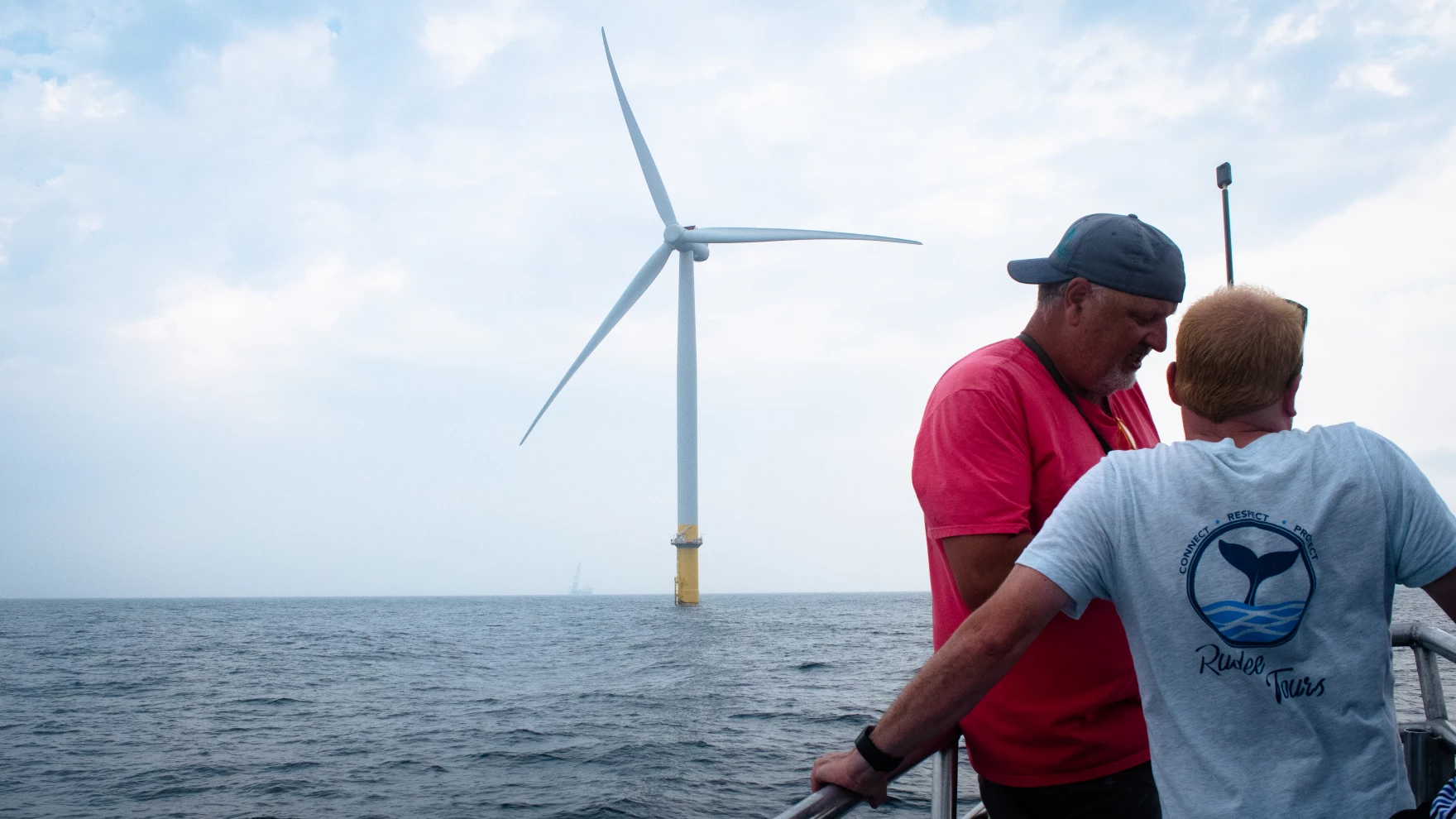
A tour boat carrying engineers, regulators, and reporters cut through choppy water 15 miles off the coast of Virginia Beach. The North Carolina Sustainable Energy Association and a group representing a network of economic development organizations chartered the boat to give the North Carolina crowd a close-up view of wind energy.
North Carolina has a few offshore wind projects on the horizon — and more are expected — as utilities like Duke Energy retire coal plants and look to fill the void with renewable energy. It takes many years of planning and construction for these wind farms to go up.
Justin Fuller, a naturalist with Rudee Tours, the company that owns the boat, pointed out the Chesapeake Light Tower as we passed it.
“People were complaining that the turbines would ruin the view from the beach and we just asked, ‘Can you see the light tower from the beach?’” Fuller said. “[The turbines] are 10 nautical miles out further.”
The boat was more than halfway to the project site, and the two wind turbines that now make up the Coastal Virginia Offshore Project were still nowhere to be seen. The tour boat sailed over the North American continental shelf, which extends about 30 miles off the coast from Cape Hatteras.
“Further out, we’ll have a few wrecks, but the majority of it is just a sandy base,” Fuller said.
Dominion Energy owns and operates the turbines. In two years, the utility will build over 170 generators here.
The group on board included one of the state regulators who will ultimately help decide when and how offshore wind comes to North Carolina. There are three federally-designated wind energy areas off the state’s coast. Dominion Energy announced last week that it will purchase the Kitty Hawk North Wind project.
Duke Energy will retire all of its coal plants during the next decade, and the utility will look to fill that void largely with renewable energy to meet state emissions reduction requirements. Wind energy could play a significant role, but the resource takes many years of planning and construction before the turbines start spinning.
North Carolina Public Utility Commissioner and former state Sen. Floyd McKissick Jr. stood on the ship’s deck, camera slung around his neck.
“I believe in that independent data collection from primary sources, and, you know, use it! Factor it in,” McKissick said.
In North Carolina, Duke proposed plans to put offshore wind on the grid by 2035. Dominion Energy’s public policy director, John Larson, said one of the biggest hurdles of the Virginia pilot project was navigating permits and regulations.
“You’re talking a three-, four-year process just to get to the point where you have the technical information,” Larson said. He led a presentation of the Virginia project in the ship’s cabin during the trip out — no easy feat, given the constant motion of the boat.
The permitting process for offshore wind is long and expensive. Duke Energy and developers don’t want to start that process until they receive the green light from regulators. Otherwise, they risk eating those costs. But NCSEA would like to see the utility take on some of those early development costs.
“We are advocating for the authorization of Duke Energy and the wind energy area developers to incur some early development costs in parallel to conducting this fact-finding exercise,” said Justin Somelofske, NCSEA’s regulatory counsel.
Somelofske said Duke Energy could pay for projects like geological studies to help speed the process along. The utility is already requesting permission to incur similar research and development costs for nuclear energy, hydropower and onshore wind.
The clean energy advocacy group also pushed regulators to develop a plan with achievable milestones. Earlier this year, Duke indicated that it was pursuing offshore wind by 2035. The utility is currently gathering information about offshore wind procurement, but hasn’t said what it will do between gathering that information and connecting wind turbines to the grid.
In a recent filing, Duke listed “limited domestic construction and equipment supply chains” as a challenge of offshore wind. Saffeer Khan, a professor at UNC Charlotte’s engineering school, joined the tour to learn more about how U.S. businesses could participate.
“Of particular strength in the Carolinas, there is cable manufacturing,” Khan said.
He listed Southwire in Huntersville, N.C., and Nexans in Charleston, S.C., as examples. Right now, European companies provide a lot of the expertise and manufacturing for the Virginia project because offshore wind is a more developed industry overseas.
But in Virginia Beach, there have been plenty of opportunities for local businesses to benefit, according to Jillian Goodwin. She works for the Hampton Roads Alliance, an economic development group that represents the region.
“Hampton Roads is known for building really large steel submarines and aircraft carriers,” Goodwin said. “It’s a lot of the same trade. It’s welders. It’s engineers. It’s a lot of the same roles.”
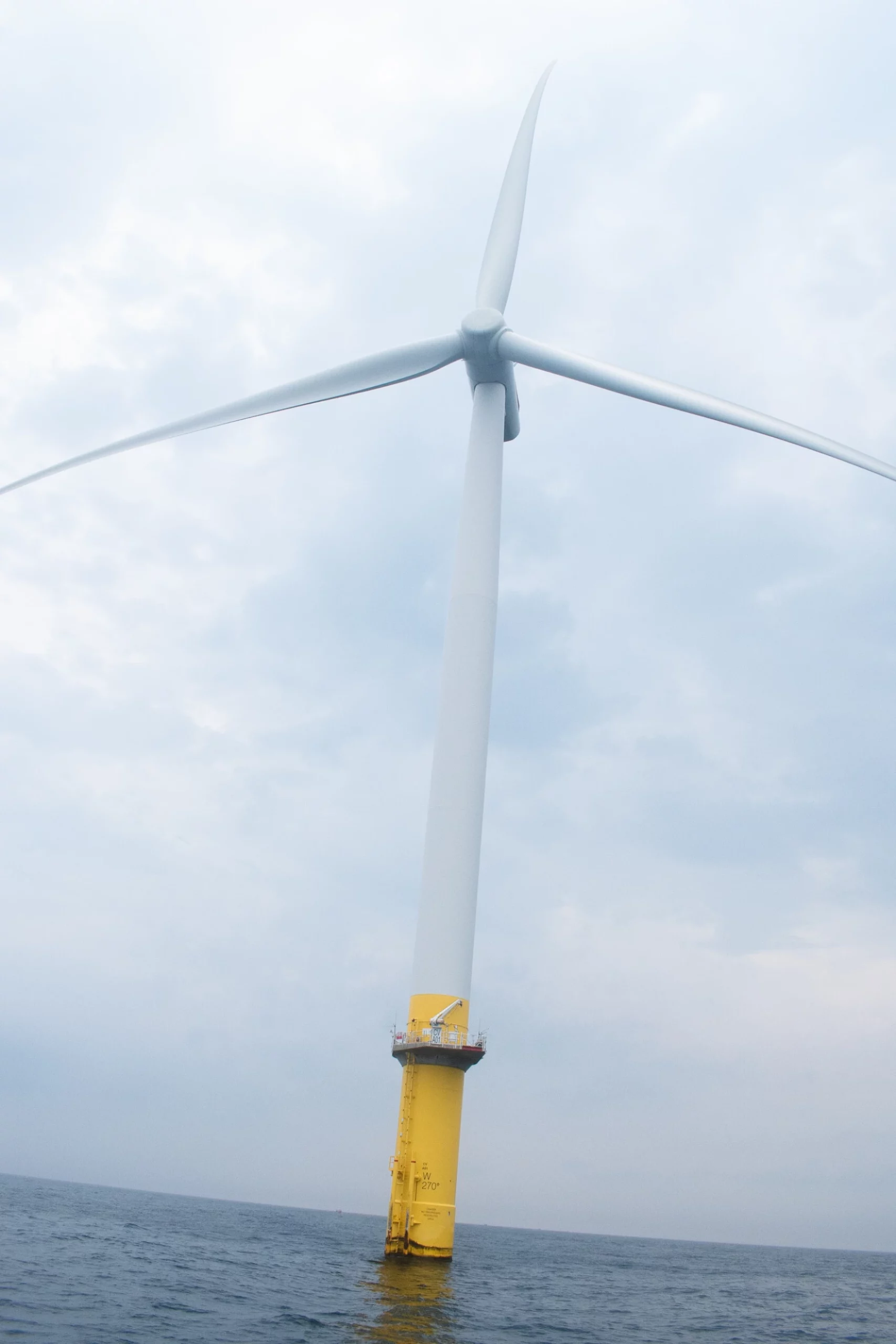
Now 27 miles out from shore, the boat threads between the two turbines. Each turbine extended about a school bus wide and stood half a mile apart.
A strong wind blew for a summer day, and a light static whoosh could be heard from the boat.
“That’s always been a misconception about these wind turbines,” said Matt Abele, NCSEA’s executive director. “They’re going to be loud, they’re going to be noisy. In fact, you roll right up next to it, and there’s next to no noise.”
The turbines tower 600 feet above the boat, from the yellow platform near the water’s surface to the tip of the turbine’s blade.
Energy travels from the turbines to an offshore substation, which gives it a boost before it connects to the grid via a thick underwater cable. When it’s complete, the wind farm will be capable of generating 2.6 gigawatts of power. That’s enough to power all the homes in Raleigh and Charlotte combined.
The total project will end up costing Dominion and ratepayers about $9.8 billion. The utility estimates that the wind farm will save customers a third of that in lower fuel expenses in the first decade.
The same winter storms that can spike the price of natural gas produce high winds that help wind turbines offset periods of high energy demand. Wind energy is also most productive later in the year when the sun shines less directly on solar panels.
These are all factors state regulators, such as Commissioner McKissick, will have to consider.
“We’re moving toward clean energy,” McKissick said. “It’s not just solar, it’s not just nuclear. I think wind could play a significant role.”
The choices state regulators make on Duke’s carbon plan this year will determine what keeps the lights on during the next decade and beyond.
Categories:
You May Be Interested In:
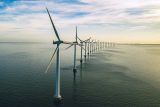
Wind Energy Is Vital for North Carolina
8 months ago by TotalEnergies Carolina Long Bay
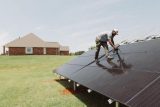
Recent polling of NC voters shows support is increasing for offshore wind
12 months ago by TotalEnergies Carolina Long Bay

Clean Energy Podcast Spotlights Offshore Wind’s Significant Potential for the Carolinas
1 year ago by TotalEnergies Carolina Long Bay
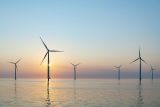
This year’s carbon plan update has high stakes for NC offshore wind. Here’s why.
1 year ago by TotalEnergies Carolina Long Bay